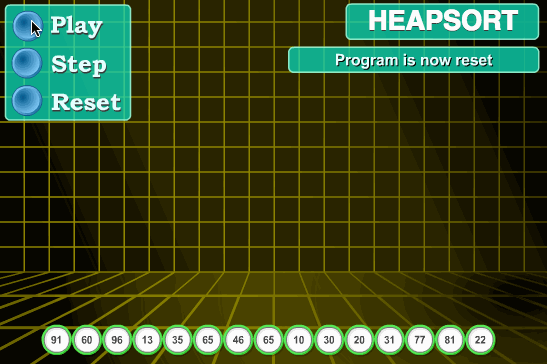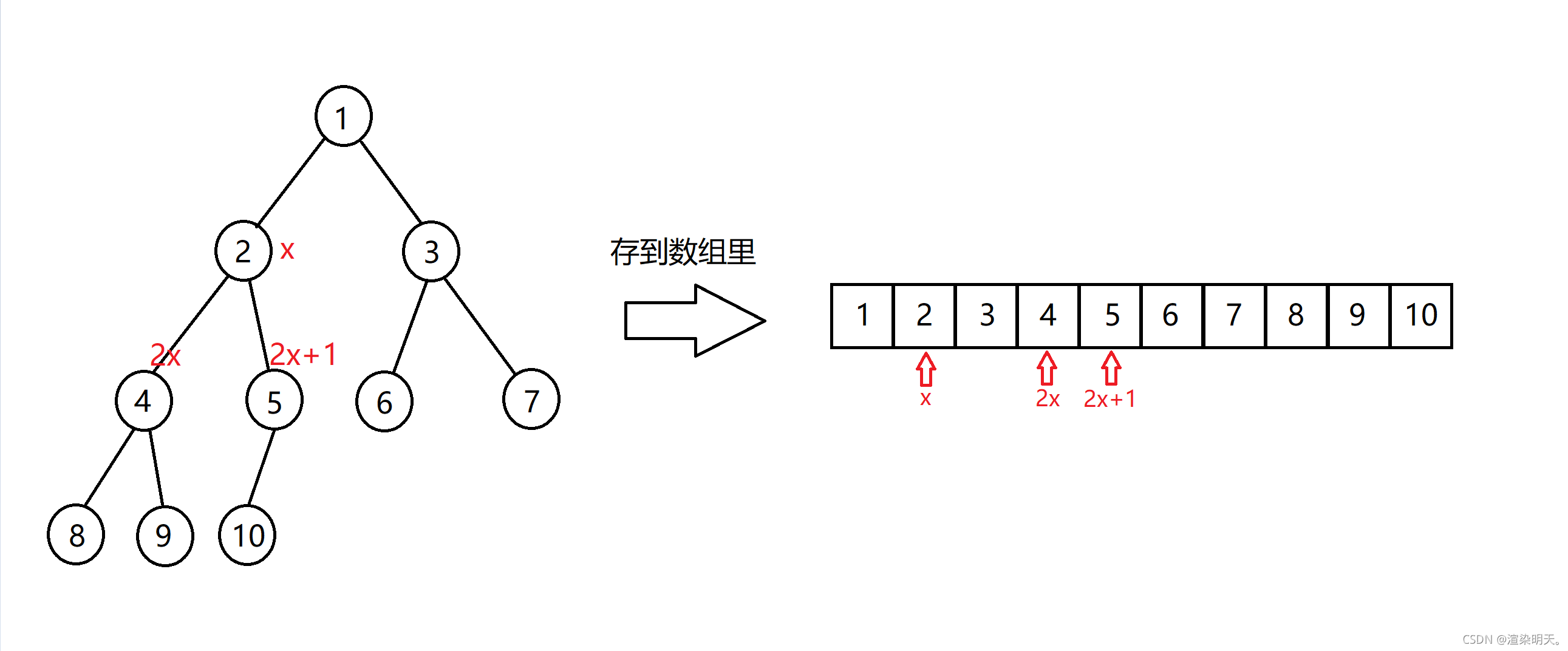1. 冒泡排序

比较相邻的元素,前一个比后一个大(或者前一个比后一个小)调换位置
public static void bubbleSort(int a[]) {
int n = a.length;
for (int i = n - 1; i > 0; i--) {
for (int j = 1; j <= i; j++) {
if (a[j] < a[j - 1]) {
int t = a[j];
a[j] = a[j - 1];
a[j - 1] = t;
}
}
}
}
2. 选择排序

思想:
- 找到一个最小值与最前面一个数进行交换
- 在第2个数~最后一个数中,找到次小值与第二个数进行交换
- 依次类推… 直到最后
public static void choiceSort(int a[]) {
int n = a.length;
for (int i = 0; i < n; i++) {
int idx = i;//记录每次需要交换的点的下标
//在 i+1 到 n-1 中的数寻找最小值的下标
for (int j = i + 1; j < n; j++) {
if (a[j] < a[idx]) {
idx = j;//记录最小值的
}
}
int t = a[i];
a[i] = a[idx];
a[idx] = t;
}
}
3. 插入排序

插入排序思想:前面设置好一个已经排好序的部分,如上图橙色部分所示,依次遍历未排序的部分,将当前遍历到的数抽出来,插入到已经排好序的数组中。
public static void insertSort(int a[]) {
int n = a.length;
for (int i = 1; i < n; i++) {
int t = a[i];//暂存a[i]的值
int idx = i - 1;//已经排好序数组的最后一个位置
//从idx往前遍历,保证不越界,并且大于a[i]
while (idx >= 0 && a[idx] > t) {
//将这些数往后挪一个位置出来,腾出位置放a[i]
a[idx + 1] = a[idx];
idx--;
}
//因为上面的while循环是要求满足a[idx]>t,所以结束的时候说明a[i] > a[idx],所以将a[i]的值放到idx + 1的位置。
a[idx + 1] = t;
}
}
4. 堆排序

上图是大顶堆的演示,原理是相同的。
堆:一棵完全二叉树。
完全二叉树:除了最后一层不满,上面是满二叉树,但最后一层从左到右。
独特的存储方式:

作业题目是小顶堆。
个人习惯:以下标1作为堆顶元素,感觉比用下标0作为堆顶元素舒服,2x和2x+1,如果是0的话,左子节点也是0,需要操作一波,我比较懒,所以就,dddd
解释一下代码中的 down(x) 操作:
down顾名思义,即将当前节点往下调整,因为要维护一个堆,就要保证
根节点是小于等于左右子节点 (小顶堆)
即:
a
[
x
]
≤
a
[
2
?
x
]
a[x] ≤ a[2 * x]
a[x]≤a[2?x] &&
a
[
x
]
≤
a
[
2
?
x
+
1
]
a[x] ≤ a[2 * x + 1]
a[x]≤a[2?x+1]
所以要从前往后遍历一遍,找到左右子节点和根节点的最小值,如果最小值出现在左右字节点中,就要与根节点位置进行交换。递归的down就行
建堆的两种方式:
1. O(nlogn)建堆,一个一个点插入。
在堆中插入一个数x:
heap[++size] = x;//将需要插入的数放到堆的最后面,进行up操作
up(x);
2. O(n) 的方式建堆
public class HeapSort {
public static int n;
public static int h[] = {0, 25, 30, 11, 7, 22, 16, 18, 33, 40, 55};
public static void down(int u){
int t = u;
if (u << 1 <= n && h[t]> h[u << 1]) t = u << 1;
if ((u << 1 | 1) <= n && h[t] > h[u << 1 | 1]) t = u << 1 | 1;
if (t != u) {
int tmp = h[u];
h[u] = h[t];
h[t] = tmp;
down(t);
}
}
public static void main(String args[]){
n = h.length;
n--;
//建堆
for (int i = n / 2; i >= 1; i--) down(i);
int len = n;
//依次提出堆顶元素
for (int i = 1; i <= len; i++) {
System.out.print(h[1] + " ");
h[1] = h[n--];//删除堆顶元素
down(1);//将堆顶元素down一遍
}
}
}
5. 百钱百鸡问题
问题提出:公元前5世纪末,中国古代数学家张丘建在他的《算经》中提出了著名的 “百钱买百鸡问题”:鸡翁一,值钱五,鸡母一,值钱三,鸡雏三,值钱一,百钱买百鸡,问翁、母、雏各几何?即一百个铜钱买了一百只鸡,其中公鸡一只5钱、母鸡一只3钱,雏鸡一钱3只,问一百只鸡中公鸡、母鸡、雏鸡各多少? 算法的伪代码如下:
for x = 0 to 100
for y = 0 to 100
for z = 0 to 100
if (x+y+z=100) and (5*x + 3*y + z/3 = 100) then
System.out.println(" "+x+" "+y+" "+z)
end if
实验要求: 对上述算法做出改进以提高算法的效率,要求将算法的时间复杂性由Ο(n3)降为 Ο(n2),并将改进的算法编程实现。
思想: 将a, b, c 转换成 a, b, (100 - a - b);
public class moneyCock {
public static void main(String[] args) {
for (int i = 0; i <= 100; i++) {
for (int j = 0; j <= 100; j++) {
boolean edge = 100 - i - j >= 0 && 100 - i - j <= 100;
boolean money = i * 5 + j * 3 + (100 - i - j) / 3 == 100;
boolean flagTimes = (100 - i - j) % 3 == 0;
if (edge && money && flagTimes) {
System.out.println("公鸡数量" + i + ' ' + "母鸡数量为" + j + ' ' + "小鸡数量为" + (100 - i - j));
}
}
}
}
}